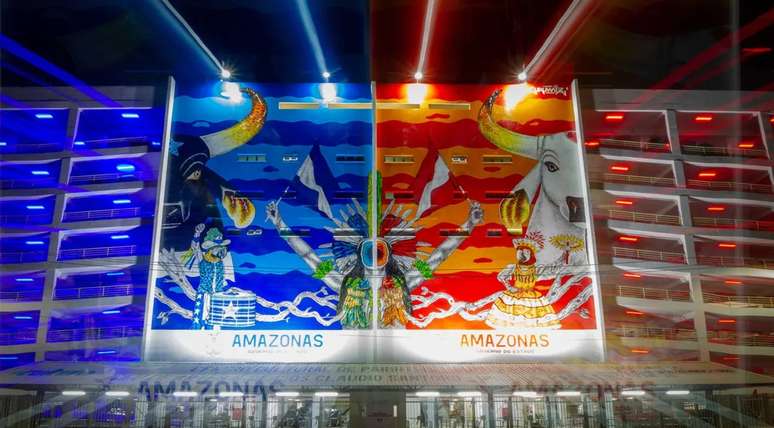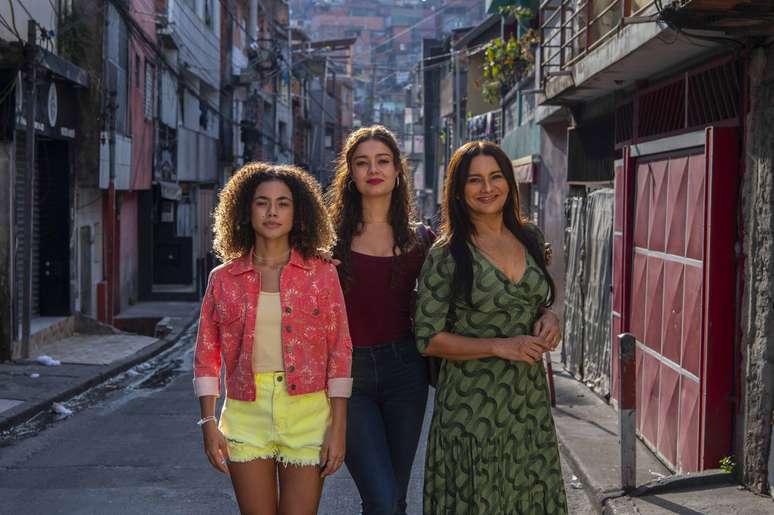Cultural heritage of Brazil, the popular festival of boi-bumbá had even more resonance with the participation of cunhã-poranga Isabelle Nogueira at the BBB
Every year, on the last Friday of June, the population of a small island of less than 100 thousand inhabitants in the Amazon receives not only spotlights, but also cranes, cranes, glitter and many fireworks displays. Tourists from all over Brazil and from outside (the city has its own airport) go there to follow the sounds of the Garantido (red) and Caprichoso (blue) oxen in the Parintins Festival based in the municipality of the same name, which is 369 kilometers from Manaus.
I am three days of parades (Friday, Saturday and Sunday) of 2h30min each which take place at the Parintins Cultural Centre, or simply Bumbodromo. In 2024, the Forest People’s Carnival is scheduled for June 28, 29 and 30. This year Rede Globo will broadcast the festival live in the north of the country through its affiliate Rede Amazônica and also via Multishow and Globoplay with an open signal for non-subscribers.
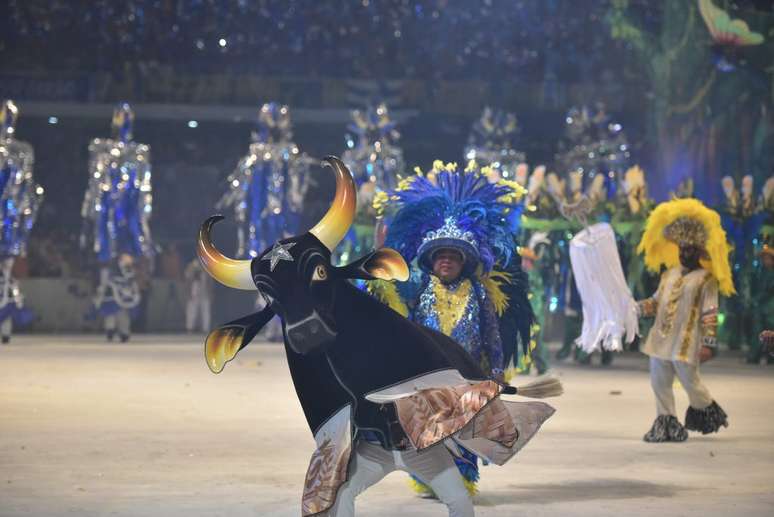
The boys
Cultural heritage of Brazil, the popular festival brings together the “crowds”, made up of fans of each bull, who gather in the Bumbódromo arena, the only free and always very competitive area. People need it dance, use props, sing and enthusiastically cheer on your bumbá’s performance to gain points in the dispute.
Entertainment in the stands not only counts for the final score, but also ensures the festival has a contagious energy. As in the samba school parade, the boi-bumbá are evaluated by ten judges, specialized in anthropology and folklore, who have the task of judging 21 elements of the parade, analyzing melodies, allegories, choreographies, the characters of each group and, obviously , , , the boys.
In recent times, the festival has gained even more attention thanks to Big Brother Brazil, when the cunhã-poranga do Boi Garantido, Isabelle Nogueira , became ambassador of the Parintins Festival. Cunhã-poranga means “the most beautiful indigenous woman of the tribe” and her entrance into the arena is one of the most anticipated moments of the festival.
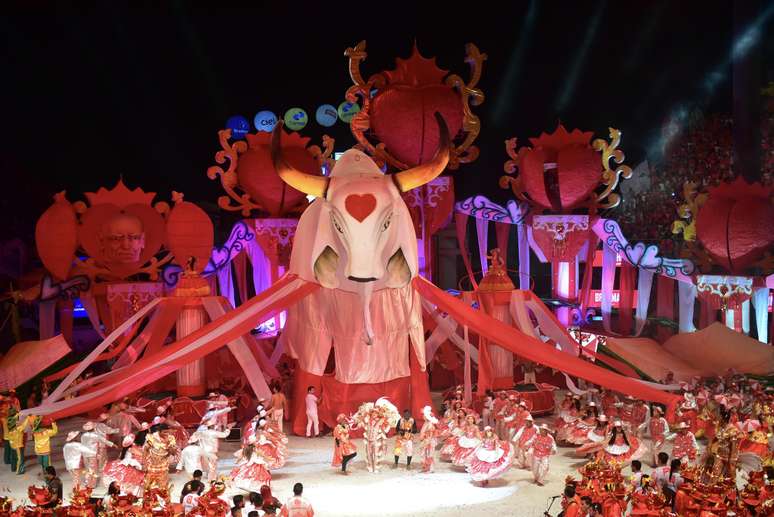
A little history of Parintins
But, despite having gained more and more importance in recent years, the party is one of the oldest in the country: Its history dates back to the early 20th century, when informal disputes involving Garantido, Caprichoso and at least five other bois-bumbás already existed.
The festival became official in 1966 , when a group of Catholic friends decided to organize a party to raise funds for the construction of the Cathedral of Nossa Senhora do Carmo, patron saint of the city. The Parintins Festival was born there. The square in front of the cathedral becomes a meeting point during the festival, which is also called Turistódromo, and there are structures set up with craft stands and a tourist information service.
Piazza Cristo Redentore or Digital Square, next to the city seafront, it is another important meeting point for hosting presentations and also for being a stone’s throw from Leopoldo Neves Municipal Market, where you can eat the famous xis-caboquinho, which contains coalho cheese, fried banana, butter and tucumã.
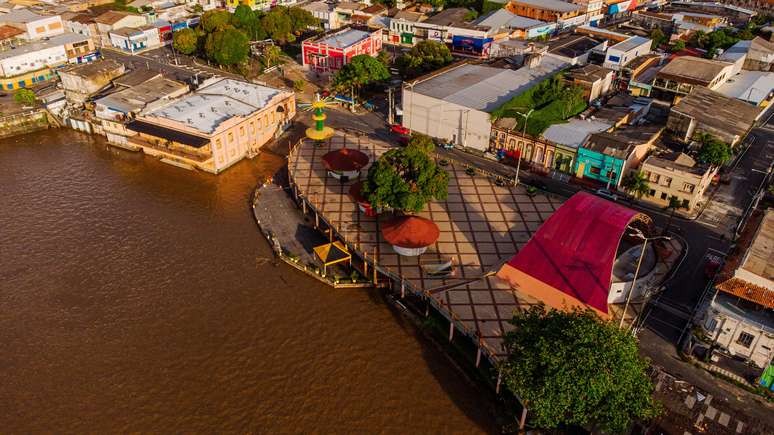
How the Parintins Festival parades work
As in Sapucaí, each boi-bumbá has around 3,500 members divided into 30 wings. Some of the figures that stand out are the host, who narrates each stage of the plot, the standard bearer, who carries the symbol of each ox, the little sinha, who is responsible for greeting the ox and the crowd, and the cunhã-poranga, the Indian warrior and guardian who expresses her strength through beauty.
The allegories of the procession are majestic, especially that of the ox, which has a medium 12 meters high by 40 meters long. The music – or rather, the songs – constitute a separate chapter: each bumbá sings up to 20 toadas, short songs that tell the legend of the animal venerated together with the crowd. Garantido is the oldest (1913) and also the one with the most titles. At the moment of the rival’s performance, the opposing fans must remain silent and cannot even dance at the risk of losing points: in the arena there are inspectors waiting to whistle at those who break the rules.
Only 5% of tickets for the Bumbódromo, also shaped like an ox, are sold – the rest is reserved for galleys. Rehearsals begin six months before in the “currais”, the equivalent of samba school courtyards.
The legend of the boi-bumbá
The boi-bumbá ritual tells the story of the couple Catirina and Francisco. Pregnant and full of desire, Catirina tells her husband that she wants to eat the tongue of the most beautiful ox on the farm, her boss’s favourite. Francisco kills the ox and is discovered. To save the ox, the couple calls Pajé and the doctor, who resuscitate the animal. The ox comes back to life, the couple is forgiven and a big celebration begins.
Find out more at festivaldeparintins.com.br
Source: Terra
Ben Stock is a lifestyle journalist and author at Gossipify. He writes about topics such as health, wellness, travel, food and home decor. He provides practical advice and inspiration to improve well-being, keeps readers up to date with latest lifestyle news and trends, known for his engaging writing style, in-depth analysis and unique perspectives.

